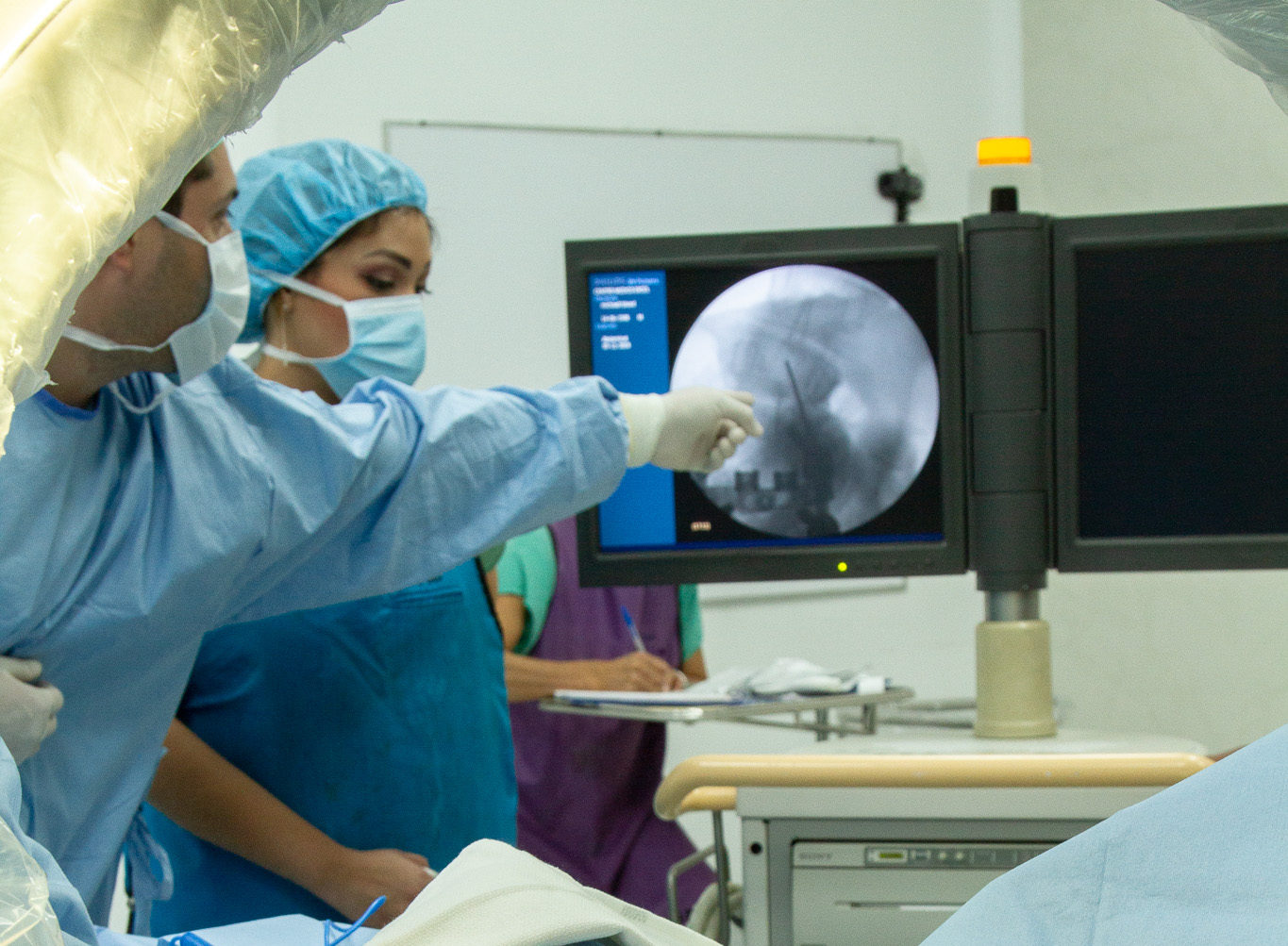Pelvic Pain: An In-Depth Exploration of Causes, Symptoms, and Comprehensive Management
Pelvic pain is a prevalent and multifaceted condition that can affect individuals of all ages and genders, though it is notably more common in women. This complex issue not only impacts physical well-being but also influences emotional and psychological health. Understanding the full scope of pelvic pain—including its symptoms, causes, risk factors, and prevention strategies—is crucial for effective management and achieving long-term relief. This extensive guide delves deeply into the various aspects of pelvic pain, providing a thorough examination to aid in both understanding and treatment.
Overview
Pelvic pain is defined as discomfort or pain that occurs in the lower abdomen, pelvis, or perineum. This pain can vary significantly in its duration, intensity, and impact on daily life. Pelvic pain may be classified into two main categories:
- Acute Pelvic Pain: This type is characterized by sudden onset and can be either short-lived or intermittent. It often demands immediate medical attention due to its intensity or sudden appearance.
- Chronic Pelvic Pain: Defined as pain lasting for six months or longer, chronic pelvic pain is a persistent issue that can lead to significant disruption in daily activities and overall quality of life. It may evolve gradually, with fluctuating intensity and symptoms.
Pelvic pain can be caused by a myriad of factors ranging from infections and inflammatory conditions to chronic diseases and structural abnormalities. Its multifactorial nature requires a comprehensive approach to diagnosis and treatment to effectively address and manage the condition.
Pelvic Pain's Impact on Daily Life:
- Physical Impact: Chronic pelvic pain can interfere with basic activities such as walking, sitting, and performing daily tasks, leading to reduced mobility and overall physical function.
- Emotional and Psychological Impact: Persistent pain often results in stress, anxiety, and depression, which can further exacerbate the physical symptoms and contribute to a negative feedback loop affecting overall well-being.
Symptoms of Pelvic Pain
The manifestations of pelvic pain can vary greatly depending on the underlying cause. The symptoms may be acute or chronic and can impact various aspects of daily life:
1. Aching or Sharp Pain
Pelvic pain can present in different ways:
- Constant Discomfort: Some individuals experience a persistent, dull ache that may be constant or fluctuate in intensity. This type of pain often feels like a steady pressure or heaviness.
- Intermittent Sharp Pain: Others may encounter sharp, stabbing pain that comes and goes. This pain can be sudden and intense, often described as shooting or piercing.
Additional Aspects:
- Pain Location: The location of the pain can vary, including the lower abdomen, pelvic region, or perineum. The exact location can provide clues to the underlying cause.
- Pain Duration: The duration of the pain can influence its impact, with acute pain often requiring urgent intervention and chronic pain necessitating ongoing management.
2. Pressure or Heaviness
The sensation of pressure or heaviness in the pelvic area can be described as:
- A Feeling of Fullness: A constant feeling of being "full" or weighed down in the pelvic region.
- Heaviness: This may be perceived as a persistent burden or weight, which can become more pronounced with physical activity or prolonged sitting.
Implications for Daily Life:
- Activity Limitations: This sensation may limit an individual’s ability to engage in physical activities or exercise, further impacting physical health and mobility.
3. Pain During Activities
Pelvic pain may intensify during specific activities:
- Sitting: Prolonged periods of sitting can exacerbate pain, particularly if the individual has poor posture or underlying pelvic issues.
- Walking: Movement can aggravate discomfort, especially if the pain is related to structural or musculoskeletal issues.
- Sexual Intercourse: Pain during or after sexual activity can impact intimate relationships and overall sexual health.
Impact on Relationships:
- Intimate Relationships: Pain during intercourse can create emotional strain on relationships, leading to reduced intimacy and communication issues between partners.
4. Menstrual Pain
In women, pelvic pain often correlates with menstrual cycles:
- Menstrual Cramps: Pain that worsens during menstruation, often accompanied by other menstrual symptoms such as bloating and mood swings.
- Endometriosis: For some, pelvic pain may be linked to conditions like endometriosis, where tissue similar to the uterine lining grows outside the uterus, causing severe menstrual pain.
Menstrual Pain Management:
- Medications: Over-the-counter pain relievers or hormonal treatments may provide relief.
- Lifestyle Adjustments: Dietary changes, regular exercise, and stress management techniques can help alleviate menstrual pain.
5. Urinary Symptoms
Pelvic pain can be associated with various urinary issues:
- Painful Urination: A burning or discomfort during urination that may indicate a urinary tract infection or other issues.
- Frequent Urination: An increased need to urinate, which may be due to irritation or inflammation.
- Difficulty Urinating: Problems with starting or maintaining urination, potentially linked to urinary obstruction or bladder issues.
Potential Diagnostic Tests:
- Urinalysis: A test to detect infections or abnormalities in the urine.
- Ultrasound: Imaging to assess the bladder and reproductive organs for structural issues.
6. Digestive Symptoms
Pelvic pain may also be accompanied by gastrointestinal symptoms:
- Bloating: An uncomfortable feeling of fullness or swelling in the abdomen.
- Constipation: Difficulty in passing stools, often linked to pelvic floor dysfunction or dietary factors.
- Diarrhea: Frequent, loose stools that may be related to underlying digestive conditions or infections.
Gastrointestinal Impact:
- Dietary Adjustments: Modifications in diet, such as increasing fiber intake or avoiding certain foods, may help manage symptoms.
7. Radiating Pain
Pain may radiate to other areas:
- Lower Back: Discomfort extending from the pelvis to the lower back, which may indicate issues with the spine or surrounding structures.
- Buttocks and Thighs: Pain that spreads to the buttock or thigh regions, often related to nerve involvement or musculoskeletal problems.
Comprehensive Assessment:
- Physical Examination: A thorough physical exam can help determine the source of radiating pain and guide appropriate treatment.
When to Seek Medical Attention
Prompt medical attention is essential for managing pelvic pain effectively. Seek help if you experience:
1. Severe or Persistent Pain
Pain that is:
- Intense and Disabling: Pain that is severe and interferes with daily activities or significantly impacts quality of life.
- Long-Lasting: Persistent pain that continues for an extended period, requiring ongoing evaluation and management.
Urgent Care Needs:
- Intervention: Early intervention can prevent complications and improve outcomes.
2. Pain Accompanied by Fever
Pelvic pain with:
- Fever: Indicates a possible infection or systemic issue that requires immediate medical evaluation.
Possible Infections:
- Pelvic Inflammatory Disease (PID): An infection of the reproductive organs.
- Appendicitis: Inflammation of the appendix that may present with pelvic pain and fever.
3. Sudden, Severe Pain
Acute pain that:
- Onset is Abrupt: Sudden, intense pain could signify a serious condition like an ovarian cyst rupture or appendicitis, necessitating urgent medical attention.
Emergency Situations:
- Hospital Evaluation: Immediate evaluation in an emergency setting may be required.
4. Pain with Unusual Symptoms
When pain is accompanied by:
- Unexplained Weight Loss: Significant weight loss without an obvious cause can be a red flag for serious underlying conditions.
- Heavy or Unusual Vaginal Bleeding: Abnormal bleeding patterns that are heavy or unusual warrant further investigation.
- Blood in Urine or Stool: Presence of blood indicating possible serious issues such as gastrointestinal or urological conditions.
Diagnostic Tests:
- Imaging: Ultrasound or CT scans to identify potential underlying causes.
5. Pain During Pregnancy
Pelvic pain during pregnancy:
- Requires Evaluation: To ensure both maternal and fetal health, and to address any potential complications.
Pregnancy-Related Considerations:
- Consultation with Obstetrician: Regular check-ups and discussions about pain management strategies during pregnancy.
Causes of Low Backache
Low back pain often overlaps with pelvic pain due to shared anatomical structures and nerves. Common causes include:
1. Muscle Strain
Muscle or ligament injuries can occur due to:
- Overuse: Repetitive stress or excessive physical activity leading to muscle strain.
- Trauma: Sudden injuries or accidents that affect the lower back.
Treatment Options:
- Rest and Rehabilitation: Rest, physical therapy, and exercises to strengthen the affected muscles.
2. Herniated Discs
Herniated or bulging discs may:
- Compress Nerves: Leading to localized or radiating pain, often requiring medical or surgical intervention.
Management Strategies:
- Medications and Physical Therapy: Pain relief and strengthening exercises.
- Surgical Options: In severe cases, surgical intervention may be necessary.
3. Degenerative Disc Disease
Aging or wear and tear can lead to:
- Chronic Back Pain: Degeneration of spinal discs resulting in persistent discomfort.
Lifestyle Modifications:
- Exercise and Weight Management: To reduce stress on the spine and manage symptoms.
4. Spinal Stenosis
Narrowing of the spinal canal may:
- Put Pressure on Nerves: Causing pain, numbness, or weakness in the lower back and legs.
Treatment Approaches:
- Physical Therapy and Medication: To alleviate symptoms and improve function.
5. Arthritis
Inflammation of spinal joints:
- Arthritis: Can lead to back pain and stiffness, impacting mobility.
Management Techniques:
- Anti-Inflammatory Medications and Exercise: To reduce inflammation and improve joint function.
6. Osteoporosis
Weakening of bones due to:
- Bone Loss: Leading to fractures and pain in the lower back.
Preventive Measures:
- Bone Density Tests: Regular screenings and calcium/vitamin D supplementation.
Other Contributing Factors
Several factors can exacerbate or contribute to pelvic pain:
1. Inflammatory Conditions
- Pelvic Inflammatory Disease (PID): Infection of the reproductive organs leading to chronic pain and discomfort.
- Endometriosis: Presence of endometrial-like tissue outside the uterus, causing significant pain and potential infertility.
2. Infections
- Urinary Tract Infections (UTIs): Often present with pelvic pain and urinary symptoms.
- Sexually Transmitted Infections (STIs): Can cause pelvic pain and other symptoms requiring treatment.
3. Surgical History
- Scar Tissue: Previous surgeries can lead to adhesions and chronic pelvic pain.
4. Neurological Conditions
- Pudendal Neuralgia: Pain caused by irritation or damage to the pudendal nerve.
- Interstitial Cystitis: Chronic bladder condition leading to pelvic pain and urinary symptoms.
5. Reproductive Health Issues
- Ovarian Cysts: Fluid-filled sacs on the ovaries causing pain.
- Fibroids: Non-cancerous tumors in the uterus that can lead to pelvic discomfort.
- Ectopic Pregnancy: A pregnancy occurring outside the uterus, which can cause severe pelvic pain and requires immediate medical attention.
Risk Factors
Several factors can increase the likelihood of experiencing pelvic pain:
1. Gender
- Women: More likely to experience pelvic pain due to reproductive health issues and menstrual cycles.
2. Age
- Reproductive Age: Women in their reproductive years are more susceptible to pelvic pain related to menstrual and hormonal changes.
3. Sexual Activity
- Infections and Conditions: Increased risk due to potential for infections and inflammatory conditions.
4. Medical History
- Previous Surgeries or Conditions: Past pelvic surgeries or chronic conditions may increase the risk of developing pelvic pain.
5. Lifestyle Factors
- Posture and Exercise: Poor posture and lack of physical activity can contribute to pelvic pain, as well as stress and emotional factors.
Complications
Without effective treatment, pelvic pain can lead to several complications:
1. Chronic Pain
- Persistent Discomfort: Long-term pain that affects daily activities and overall quality of life, leading to ongoing suffering.
2. Emotional and Mental Health Issues
- Mental Health Impact: Persistent pain often results in anxiety, depression, and a decreased ability to enjoy life.
3. Sexual Dysfunction
- Impact on Intimacy: Pain during intercourse can lead to sexual dysfunction and strain on intimate relationships.
4. Reduced Mobility
- Physical Limitations: Pain that limits physical activity and movement, impacting overall health and fitness.
5. Reproductive Health Issues
- Fertility Problems: Untreated conditions and infections can lead to fertility issues and complications with reproductive health.
Prevention Strategies
While prevention may not always be feasible, several strategies can help reduce the risk and severity of pelvic pain:
1. Practice Safe Sex
- Condom Use: To prevent sexually transmitted infections and reduce the risk of related pelvic pain.
- Regular STI Screenings: To detect and treat infections early.
2. Maintain Good Hygiene
- Personal Hygiene: Regular handwashing and proper care to reduce the risk of infections.
3. Exercise Regularly
- Core and Pelvic Strengthening: Activities that strengthen core and pelvic muscles can help prevent and manage pelvic pain.
4. Manage Stress
- Relaxation Techniques: Incorporating practices like yoga, meditation, and deep breathing exercises to reduce stress and its impact on pain perception.
5. Follow a Healthy Diet
- Balanced Nutrition: Eating a diet rich in fruits, vegetables, and whole grains to support overall health and prevent constipation or digestive issues.
6. Stay Hydrated
- Adequate Fluid Intake: Drinking plenty of water to maintain urinary tract health and prevent dehydration.
7. Avoid Prolonged Sitting
- Movement Breaks: Taking regular breaks to stand, stretch, and move around, especially for those with sedentary jobs.
8. Regular Medical Checkups
- Routine Visits: Regular consultations with healthcare providers to monitor and address any potential issues early.
Conclusion
Pelvic pain is a multifaceted condition with a significant impact on an individual's quality of life. By understanding its various aspects—symptoms, causes, risk factors, complications, and prevention strategies—individuals can take proactive steps to manage and alleviate their pain. Comprehensive management, early intervention, and a multidisciplinary approach can greatly enhance the quality of life for those affected by pelvic pain. If you or a loved one is experiencing persistent or severe pelvic pain, consulting with a healthcare professional is crucial for obtaining a proper diagnosis and tailored treatment plan to address the underlying causes and improve overall well-being.
dxcbv
.png)












